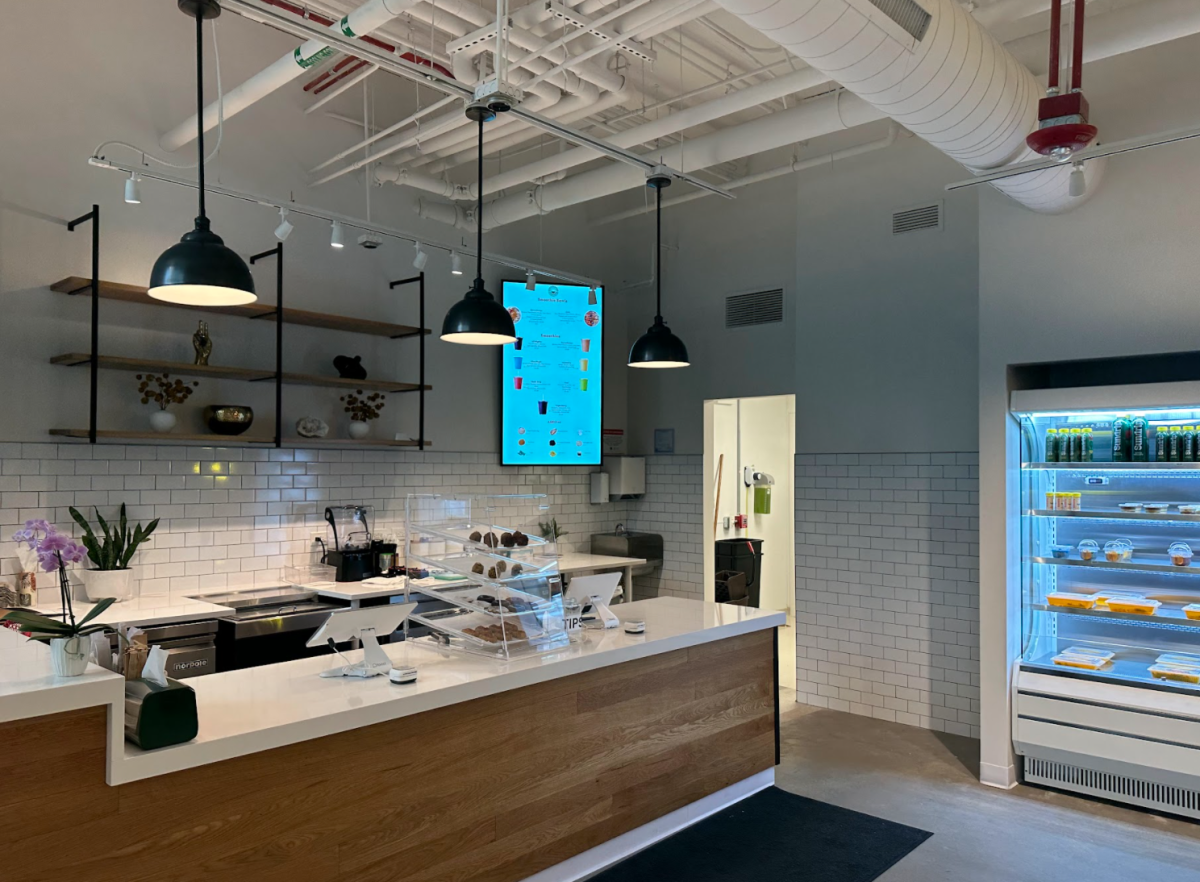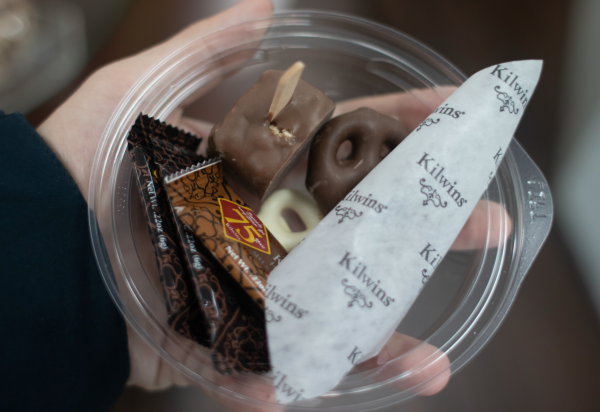
Sabrina Chang
Sundrip is a vegan café on 1109 East 55th Street.
Walk through Downtown Hyde Park and you may notice the lack of some familiar fixtures. In recent months, several long-standing establishments have bid their farewells to the community.
One such closure is the iconic Mellow Yellow. This vintage eatery had been dishing up hearty breakfast options on 53rd Street since its opening in 1976. The Hyde Park Herald attributes Mellow Yellow’s closure last June to the retirement of the former owner, Francisco Garcia. A soul food joint, Oooh Wee! It is!, has taken its place.
Over its impressive 46-year tenure, the restaurant had become an integral presence in the community. “I ate at Mellow Yellow quite often in the ’70s when I was a high school student at Kenwood [Academy]. I think I went there once for a first date,” said Tim, a Hyde Park local. “Before closing, I made sure to go back one last time.”
But Mellow Yellow is not the only change to 53rd Street’s business strip. Several other well-known eateries, including Leona’s Pizza and The Budlong Hot Chicken, have also shut down business for good. Some of these closures were accompanied by more tumult. What’s Krackin, a popular seafood joint, closed this September amidst a legal dispute with the landlord.
On East 56th Street, Piccolo Mondo, an Italian restaurant once celebrated on The Maroon’s Gems of Hyde Park, abruptly shut its doors last November after a 39-year legacy. The sudden closure left several former staff without jobs or severance pay at the start of the holiday season. The staff launched a virtual tip jar at the end of December 2022 to cover living expenses.
Amid these closures, new businesses have emerged. Sundrip, a vegan eatery offering smoothie bowls, salads, and juices, opened their doors in August right below Campus North. Litehouse Whole Food Grill also relocated to a new storefront on 53rd Street.
Part of the changes in Hyde Park can be credited to funding from governmental organizations. Kilwins, an ice cream and dessert parlor, recently received a $250,000 community grant from the city of Chicago to construct a “chocolate garden” in its backyard. The area, complete with amenities and an outdoor patio, will provide a versatile space for hosting weddings, parties, and other community events. Furthermore, the city of Chicago also recently awarded a $5 million grant to Revive 6300 in a project to build high-end offices on the site of the Washington Park National Bank building.

These changes in Hyde Park’s business landscape reflect a response to evolving consumer demands. With recent University land acquisitions and the construction of the Obama Presidential Center (OPC), Hyde Park is undergoing a gradual demographic shift. The median age of Hyde Park residents has gradually declined for decades, and the Black population has decreased by 33 percent since 2000.
Given UChicago’s continuous expansion efforts, this change will likely persist. For example, the University of Chicago has partnered with two real estate firms to build Harper Court Phase II. This 13-story tower will house quantum and life sciences laboratories, along with heavy technological infrastructure. Replacing the restaurant Park 52, the project began earlier this year and is expected to conclude by mid-2024.
These developments have attracted criticism from some Hyde Park natives. Corporate and institutional actors are increasingly dominating commercial and residential real estate in the neighborhood. Investors currently own about 25 percent of housing in Hyde Park, tying it as the 6th most investor-dominated zip code in the city of Chicago. All districts within the top five are adjacent areas around the South side.
Many South Shore residents have united under the aid group Not Me We to advocate for better housing and sustainability metrics. Earlier this year, their efforts led to the passing of the Woodlawn Housing Preservation Ordinance, allocating $4.5 million of city funding for affordable housing programs. The ordinance also established affordability requirements for 30 percent of new housing units built on 52 vacant lots near Woodlawn.
In response to such pressures, the developers of Harper Court Phase II have pledged to meet the University’s diversity goals. The project aims to create economic opportunity for women and minority contractors, with “2000 construction jobs tied to the project.”
New businesses are also contributing to inclusive community-building. Jackie Jackson, the owner of Kilwins, stressed her desire to keep the renovated patio space affordable. “The whole goal is to bring something to the community that people can utilize, feel safe, and have fun with. We don’t want to charge a lot of money because we really want it to be accessible to the community.”
Many of the storefronts once occupied by Mellow Yellow and other fixtures now stand empty, awaiting new tenants. As Tim savored a steak salad at the recently opened Litehouse Grill, he said, “Growing up in Hyde Park means that you get used to a certain rhythm of change… As much as I feel nostalgia for those old fixtures, life moves on.”
Correction, October 30, 5:25 p.m.: A previous version of this article’s headline misconstrued the nature of the changes in the local business landscape. The error was due to a breakdown in the editing process for this article.